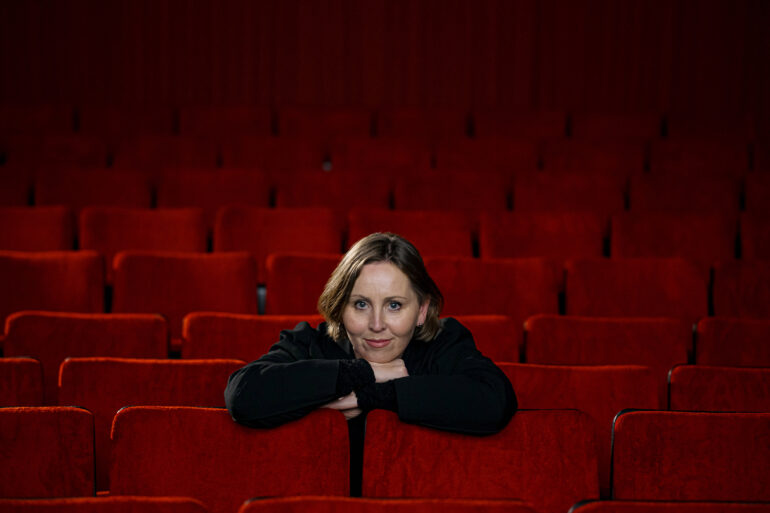WRITTEN BY: Davide Abbatescianni
Tucked in the remote Westfjords, the event offered a rare mix of bold filmmaking, community spirit, and cinematic discovery.
From 6 to 9 June, the tiny fishing village of Patreksfjörður once again transformed into a national epicentre of creative nonfiction, as the 18th edition of the Skjaldborg Festival unfolded in the remote Westfjords of Iceland.
“Since 2007, Skjaldborg’s mission has always been to create a platform for dialogue within the Icelandic documentary scene and to celebrate creative documentaries,” says Kristín Andrea Þórðardóttir, one of the festival’s organisers. “It’s one of the most established festivals in Iceland, and has helped elevate local documentary filmmaking.”
This year’s edition bore both the joy of discovery and a note of remembrance. In January, Iceland lost one of its most insightful and loyal cultural voices: journalist and critic Ásgeir Ingólfsson. In honour of his legacy, Skjaldborg not only introduced a touching tribute in the form of The Cultural Smuggler (Menningarsmyglarinn), a documentary project pitched in the Works in Progress (WIP) strand produced and directed by Jón Bjarki Magnússon and Haukur Már Helgason, but also inaugurated a new prize in his name. The Ásgeirinn award, given to the festival’s most loyal spectator, celebrated the enduring connection Ingólfsson had with Skjaldborg.
From this spirit of tribute emerged a vivid programme that spanned new voices, established talent, and meaningful encounters — both on screen and off. As Þórðardóttir notes, “We open the call just after New Year’s each year for both premieres and works in progress. We try to be aware of who might be finishing a film around the Skjaldborg dates and encourage them to apply." Each year, a new selection committee is assembled, seeking out works that reflect the festival’s artistic and thematic ambitions.
The Jury Prize for Best Documentary Feature went to Amateur’s Paradise (Paradís amatörsins). Janus Bragi Jakobsson’s film delicately weaves together the stories of Icelandic men across four generations sharing their lives online. For documentary short, the Jury prize went to Undefeated (Ósigraður), in which Jóna Gréta Hilmarsdóttircaptures her father’s dogged legal and emotional struggle over contested land in Gufunes. Meanwhile, The Farmer and the Factory (Bóndinn og verksmiðjan) — a powerful depiction of resistance against bureaucratic and industrial pressures, directed by Barði Guðmundsson and Hrafnhildur Gunnarsdóttir — took home the Audience Award.
The festival’s impact lies not only in its award-winning works, but also in its unique approach to community and industry engagement. Skjaldborg drew around 200 guests from across Iceland and beyond this year. But the festival is woven into local life with almost folkloric intimacy. “It was founded by filmmakers and has always been run by filmmakers,” says Þórðardóttir. “The filmmakers bringing films often contribute in other ways as well. A director premiering a film in the morning may also be the DJ playing at the party in the evening.”
The festival’s namesake cinema, Skjaldborgarbíó, is run by the local Lions Association, who maintain it year-round on a volunteer basis. Their collaboration with the festival, alongside that of the Women’s Association of Patreksfjörður — famed for preparing a legendary fish stew for guests — creates a rare balance between professional platform and small-town warmth. “Without these volunteers, the festival would not be possible,” adds Þórðardóttir.
Skjaldborg also makes space for experimentation and feedback through its vibrant WIP section. Alongside The Culture Smuggler, this year’s line-up included Björn Leó Brynjarsson, Grímur Jón Sigurðsson and Helgi Hrafn Guðmundsson’s New Heights (Helgi verður stór), an intriguing portrait of a 56-year-old taxi driver contemplating his past body modifications and one final rally; Jón Bjarki Magnússon and Hlín Ólafsdóttir’s ****Howl! (Gagg!), a lyrical essay film in which a sailor howls to Arctic foxes and finds kinship across oceans; and Ísak Hinriksson’s Hallgrímur, a profile of celebrated Icelandic writer Hallgrímur Helgason. The WIP sidebar was rounded off by Postcards (Póstkort) by Freyja Kristinsdóttir, a documentary about her father Kristinn’s first walk on the Camino de Santiago. He writes 46 postcards to his wife, recently diagnosed with Alzheimer’s — one for each year together. Eight years later, he returns to the trail to pen the final postcard.
The festival also hosted two industry keynotes: a deep-dive into the dynamics between documentary filmmakers, publicists, and trade press, and a discussion on sales and marketing by Martina Droandi, of The Open Kitchen. Meanwhile, Italy’s Alessandra Celesia, winner of CPH:DOX 2024 for her Northern Irish-set film The Flats, served as this year’s Guest of Honour.
Skjaldborg continues to be made possible through strong institutional and grassroots support. Key partners include the Icelandic Film Centre, Film in Iceland, the National Film Archive of Iceland, the Westfjords Regional Culture Fund, the Westfjords Energy Company, and the Vesturbyggð municipality.
Despite this strong foundation, challenges persist. “The documentary scene has grown quite a lot in recent years,” notes Þórðardóttir, “and general audience appreciation is slowly growing. That’s in no small part due to Skjaldborg and to Bíó Paradís in Reykjavik, the main theatrical release platform for documentaries.” Still, she notes, funding remains a bottleneck. “Access to funding is more limited than what our Nordic counterparts are used to. It’s important for people to reflect their identity in their own reality — and for that, increased government support is needed.”
To support the next generation, Skjaldborg has since 2022 run a children’s documentary programme, bringing short-form doc workshops into three elementary schools across the country. Development labs, WIP feedback, and industry talks further enhance its impact as a springboard for Icelandic nonfiction voices.
Ultimately, what sets Skjaldborg apart isn’t only its content, but its atmosphere — a fusion of cinema, community, and celebration that’s hard to replicate. “It’s not just a festival,” concludes Þórðardóttir. “It’s a gathering. A place where filmmakers, audiences and locals come together — to share, to reflect, to dance, to eat stew, to watch the northern light of Icelandic storytelling shine just a little brighter.”



